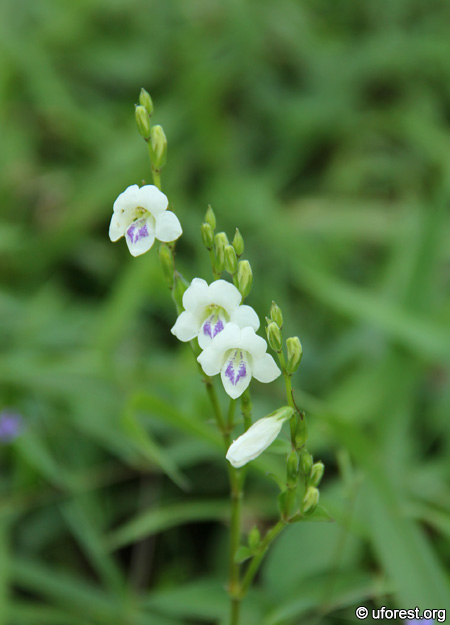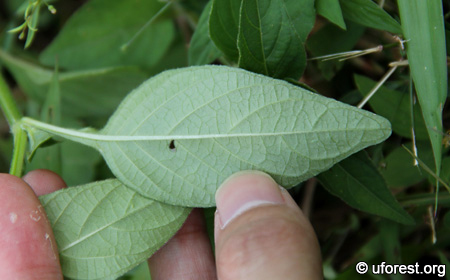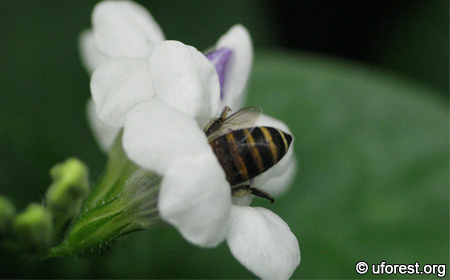Asystasia gangetica micrantha (L.) T. Anderson
| Etymology | Genus | Inconsistent; radially symmetrical flowers in the genus uncommon in the family (not for this subspecies) |
|---|---|---|
| Species | After India's Ganges River; probably where it was first discovered | |
| Family | Acanthaceae | |
| Synonyms | Asystasia intrusa (Forssk.) Blume, Asystasia multiflora Klotzsch, Asystasia comorensis Bojer ex Nees | |
| Common Names | Chinese Violet, Common Asystasia | |
| Status | Exotic: Naturalised | |
| Form | Herb | |
| Native Distribution | Sub-Saharan Africa, India, Peninsular Malaysia | |
Diagnostics:
Asystasia gangetica ssp. (subspecies) micrantha is a very common herb found in open and semi-shaded areas. The white flowers with a purple-tinted lip is impossible to miss when it flowers. Vegetatively, the leaves are opposite, finely haired, and the leaf blade runs narrowly along the petiole to the stem.
Interesting Facts:
The Chinese Violet is a very successful weed in Singapore; being very widely distributed and abundant throughout the island. I have seen the entire groundcover of an Acacia auriculiformis-dominated forest carpeted by it; helped by its ability to survive under semi-shaded conditions.The flower is intricately designed for bee pollination (I have seen many butterflies feeding on the nectar too). The purple-coloured lip is likely to serve as a conspicuious platform for the insect to land while the space is just large enough for a typical Asian honey bee to squeeze in. This plant is also a host plant for the larvae of several butterflies: Autumn Leaf (Doleschallia bisaltide pratipa), Great Eggfly (Hypolimnas bolina bolina), Blue Pansy (Junonia orithya wallacei), and Jacintha Eggfly (Hypolimnas bolina jacintha) (Tan & Khew, 2012).

Form of Asystasia gangetica ssp. micrantha.

Flowers are white with a purple-tinted lip

Leaves are hairy. Note the blade runs narrowly to the end of petiole.

Underside of the leaf is slightly whitish.

The flowers are frequently visited by honey bees.
References
Tan H & SK Khew. (2012) Caterpillars of Singapore's Butterflies. National Parks Board, Singapore. 208 pp.Author: Siyang
Posted: 2013-02-05 / Modified: 2017-12-25
Google Ads